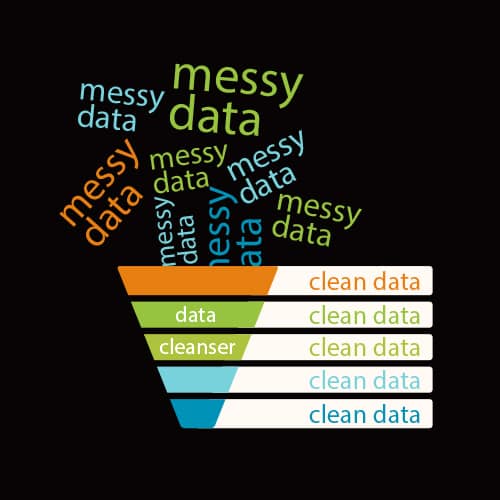Your marketing automation platform is only as smart as the data you feed it. Duplicate records, stale emails and sketchy enrichment can cripple lead scoring, segmentation and attribution. A disciplined data-cleansing framework turns an unruly database into a high-performance revenue engine—without drowning your team in spreadsheets.
The High Cost of Dirty Data
Sales reps lose up to 30 % of their day correcting bad contact records, according to multiple CRM studies.
- Lower deliverability: hard bounces and spam traps hurt sender reputation and throttle email reach.
- Misdirected automation: duplicate contacts receive conflicting nurture streams, inflating unsubscribe rates.
- Poor attribution: missing UTMs and campaign IDs blur the path from first touch to closed revenue.
- Compliance risks: outdated consent status can trigger GDPR, CCPA or CASL violations.
Six Pillars of a Clean, Compliant Database
- Standardise at the Source
Validate required fields with picklists and regex; block disposable emails and obvious fakes on form submit. - De-Duplicate Intelligently
Use fuzzy-matching and AI score thresholds (email, domain, phone, company) to merge records while preserving history. - Enrich Sparingly
Append firmographics (company size, industry) via APIs like Clearbit or ZoomInfo; log confidence scores so sales can trust the data. - Stamp Consent & Preferences
Store opt-in status, legal basis and timestamp in dedicated fields; sync across CRM, MA and customer-data platform. - Automate Ongoing Hygiene
Schedule weekly workflows to flag inactive emails, quarantine hard bounces and update job-title changes. - Archive & Purge
Set retention policies: archive unengaged contacts after 18 months; delete PII if no lawful basis remains.
Connecting Cleansing to Automation Workflows
| Data Issue | Automation Fix | Outcome |
|---|---|---|
| Duplicate lead + account | Real-time merge in CRM → sync to MAP | Single lead score and engagement record |
| Invalid email syntax | Regex reject at form, nightly bounce purge | Higher inbox placement, lower ESP costs |
| Missing company size | Enrichment API call >80 % confidence | Accurate segmenting for ABM campaigns |
Data Hygiene Checklist
- Field validation on all capture points (forms, chat, import)
- Automated dedupe rules run daily
- Bounce-handling workflow updates deliverability flag
- Enrichment API logs confidence >80 % only
- Quarterly manual spot-check of top 100 key accounts
Compliance & Governance Checklist
- Consent status and legal basis stored per contact
- Data-retention timer triggers purge/archive jobs
- Audit trail for field changes and merges
- Access controls segmented by role (GDPR Article 32)
- Incident-response plan tested annually
Clean data powers smarter segmentation, sharper targeting and trustworthy reporting—giving every automation flow a better chance to convert. Need a data health audit? Our RevOps engineers can diagnose gaps, implement automated cleansing and align your martech stack around a single source of truth.
